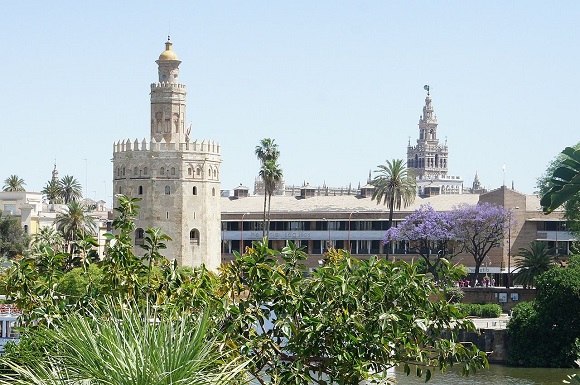Childhood
When the young Abd al-Rahman III took over the Emirate from his grandfather in the year 912, his realm was in the brink of chaos. Several territories and cities had cut ties with Cordoba. Seville was among them. The young prince managed to force the rebellious cities into submission one after the other.
When Seville capitulated in the end of 913 he started the construction of a new castle in the place of an old Visigothic Basilica. The Alcazar would become the main residence of the Muslim rulers and would be expanded several times in the future.The few remains of that first palace, can be found today under the Patio de la Monteria.


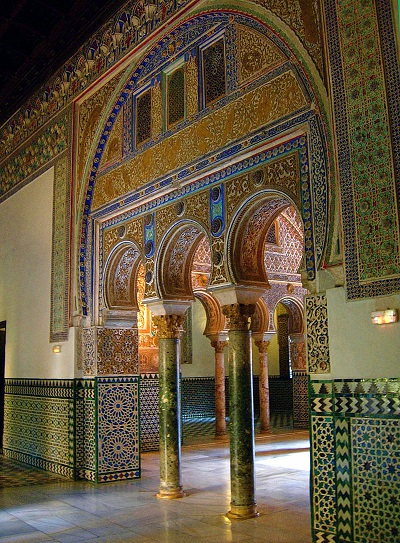
Independent from the rest of the Umayyad Empire, the Caliphate of Cordoba, established by Abd al-Rahman III in 929 would last until 1031 when it disintegrated into a cluster of independent Taifas, an Andalusian version of ancient city-states.
It was during that time that the suburb of Triana started to form, on the other side of Guadalquivir, around a new castle that would work as the city’s defensive bridgehead outside a new set of walls built around Seville in 1023.

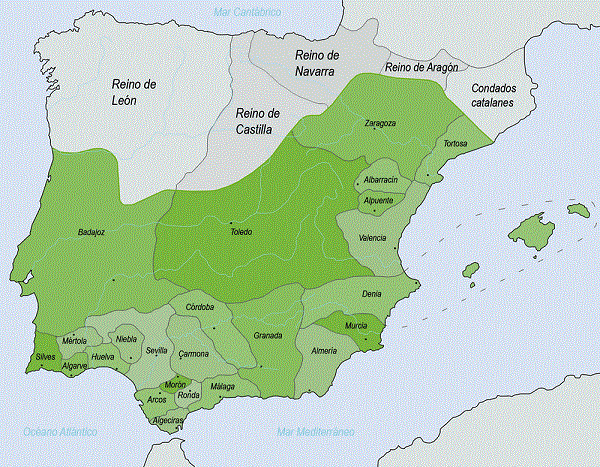
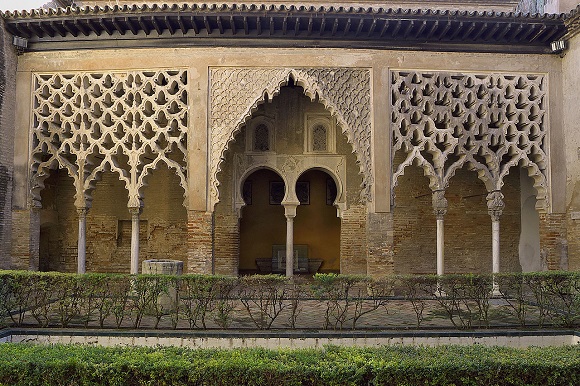
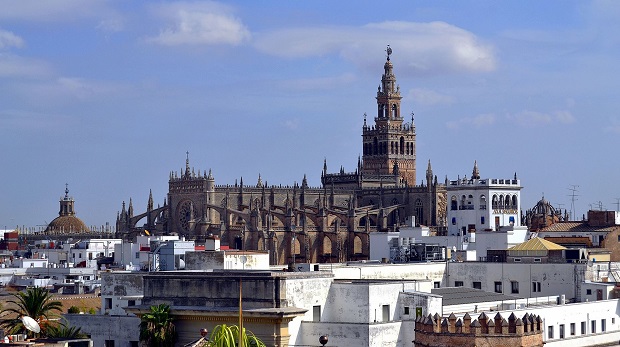
A great new mosque is commissioned by the Almohad Caliph Abu Yaqub Yusuf in 1171. Skilled builders and artisans from every part of the caliphate flock to the city and by 1176 the mosque is completed. The amazing Giralda is built with its exceptional minaret surviving to this day.
A pontoon bridge is built to connect Triana with the city, the Alcazar is expanded, the Buhaira Palace and Gardens are constructed as a residential royal palace, the fortress of the Alcalá de Guadaíra is built a few kilometres outside the walls.
The last addition of the Almohads, the Torre del Oro, was constructed later on (1220), at a time when the Islamist regime had lost the major Battle of Las Navas de Tolosa (1212) and the Christian Reconquista had already begun.


